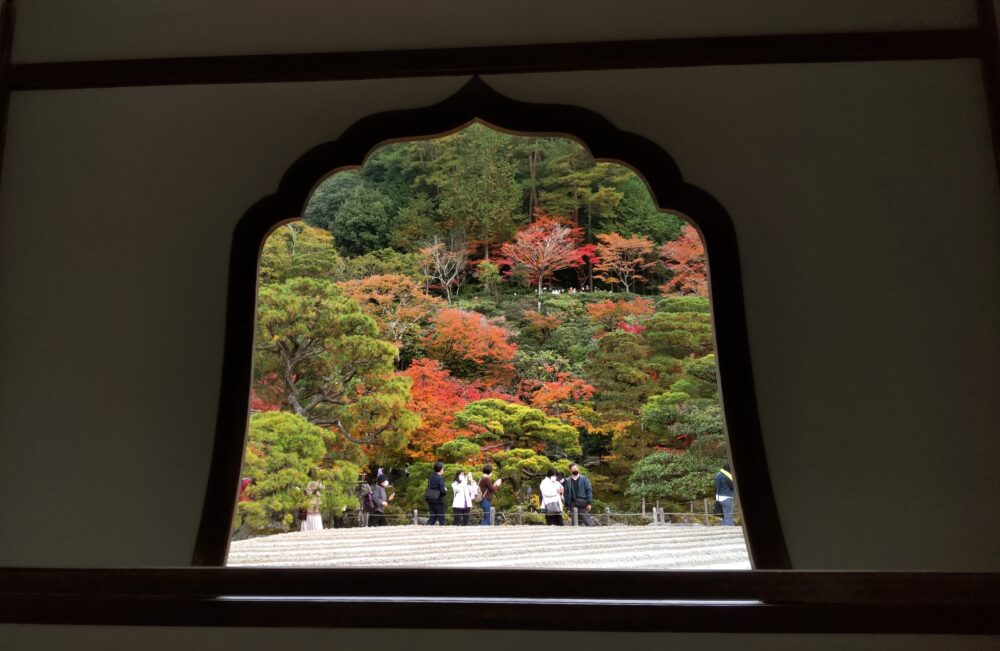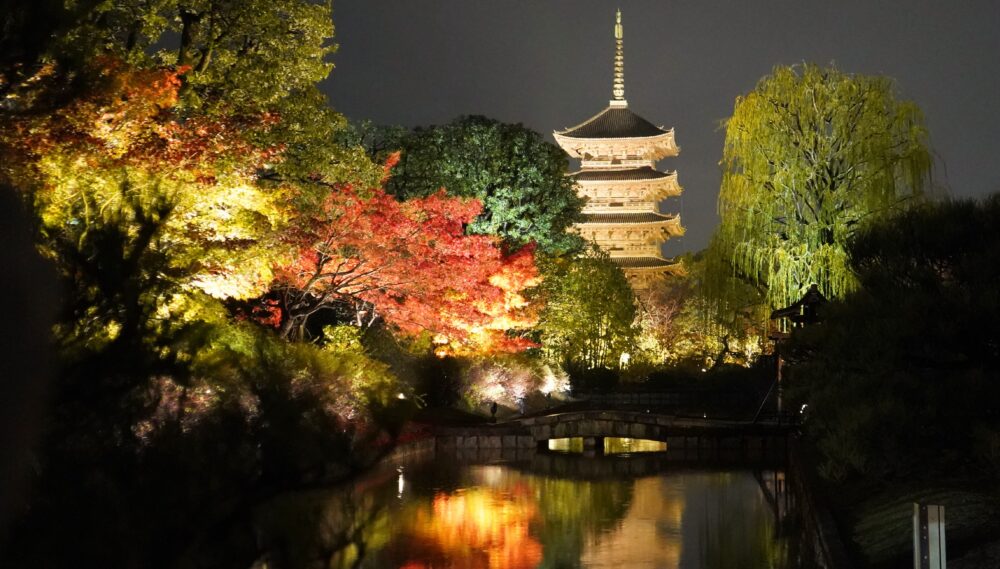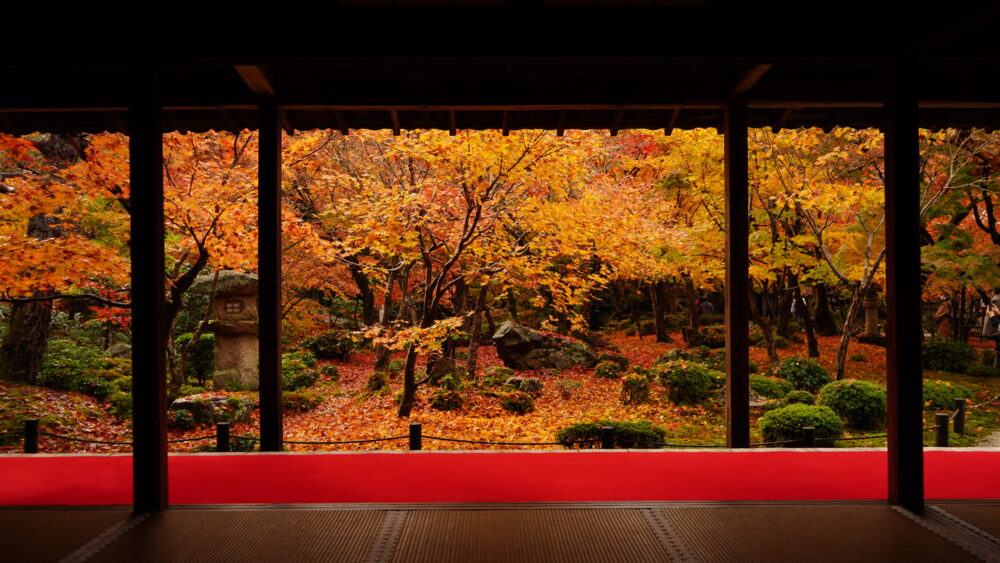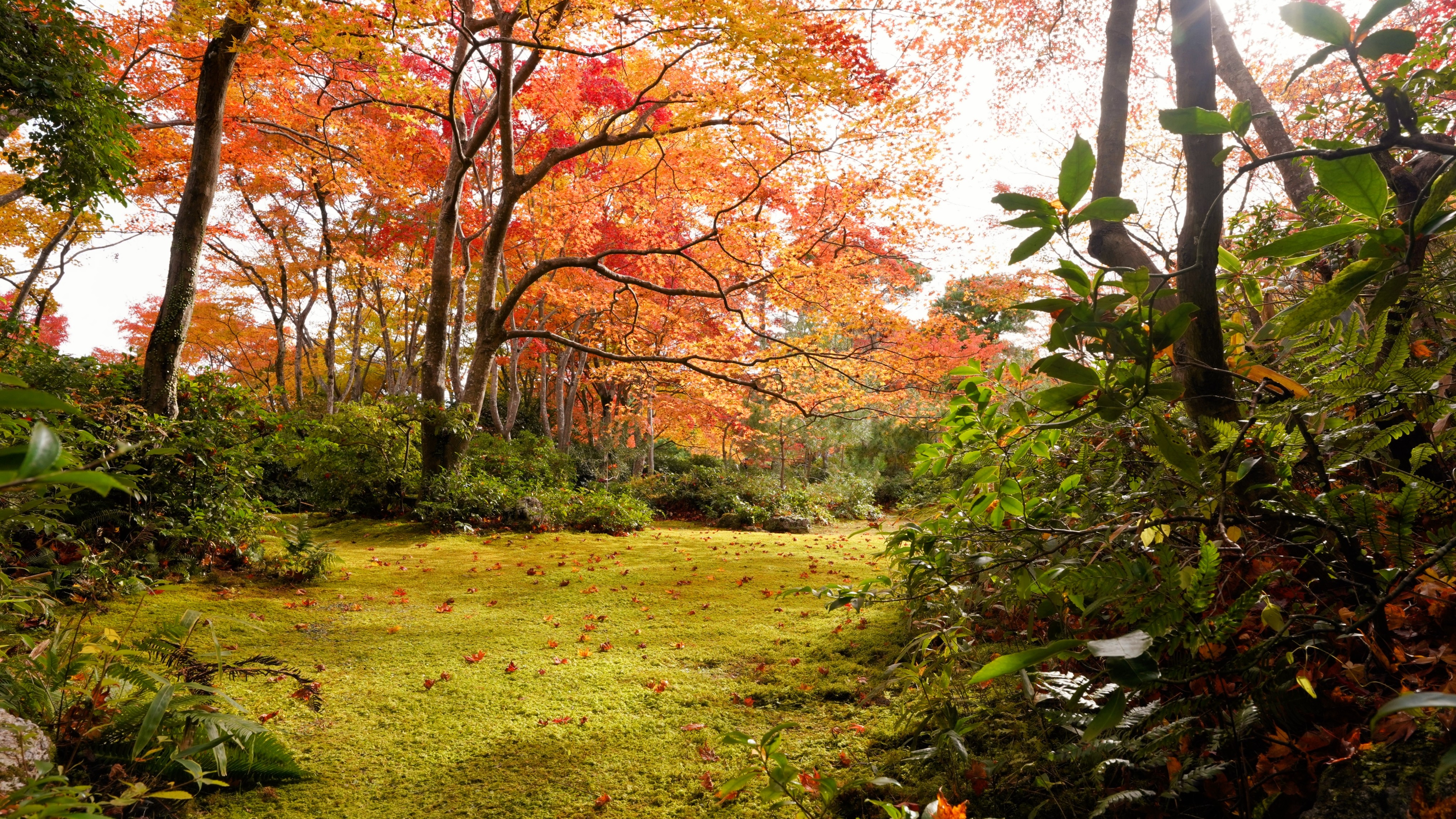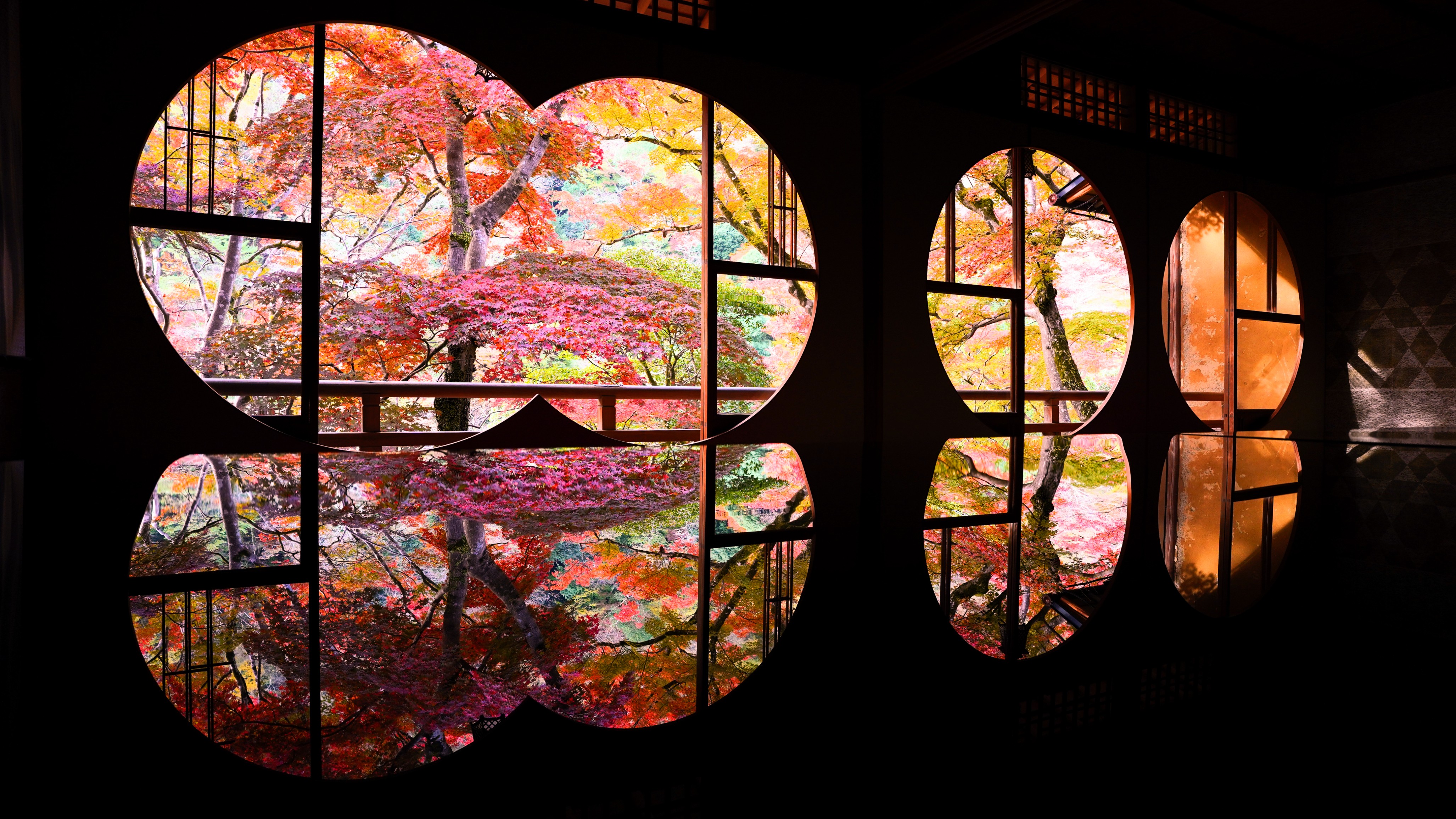Hogo-in Temple – All you Need to Know
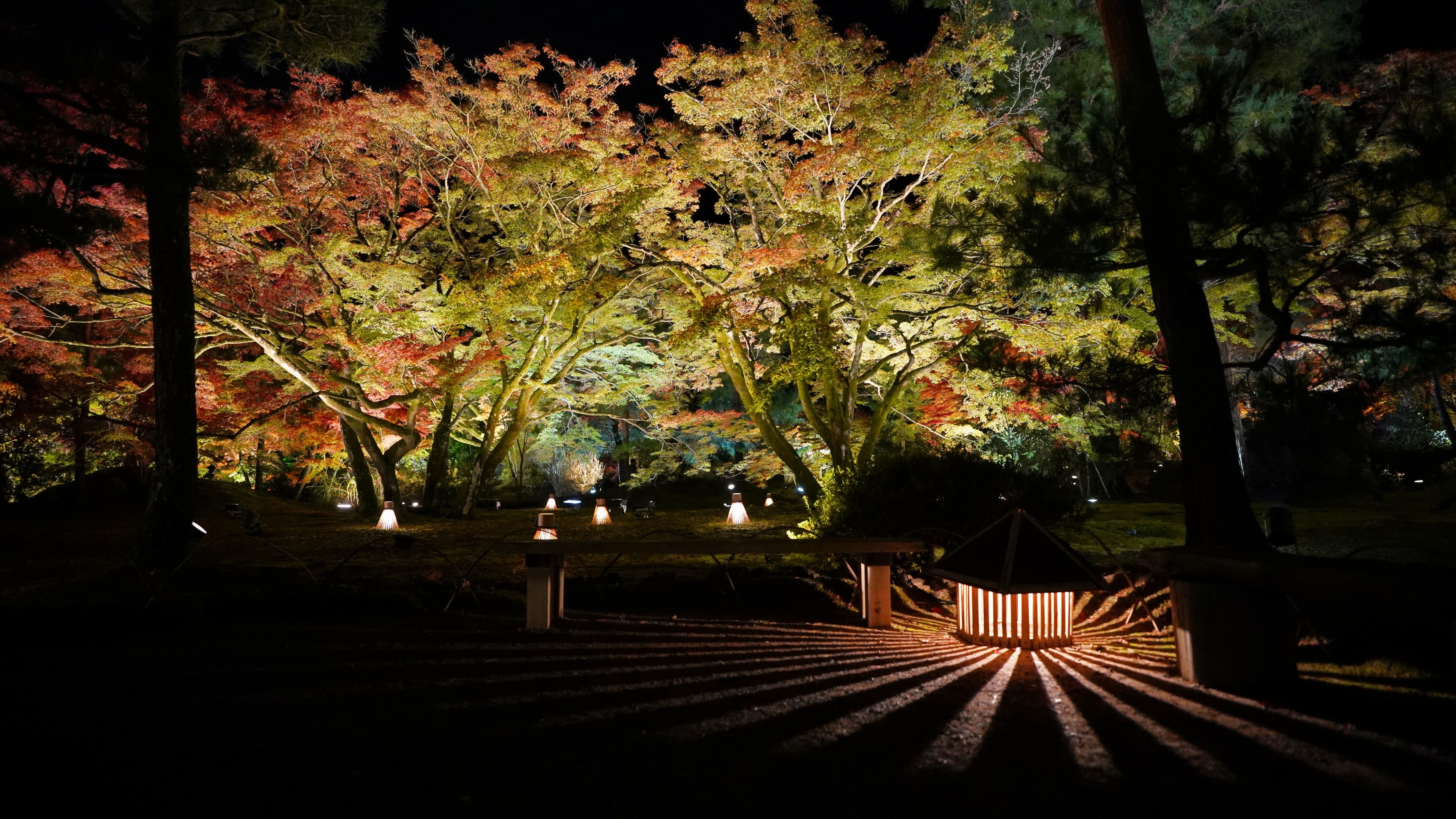
Escape from the crowds of Arashiyama and experience a sermon delivered by nature. Welcome to the “Shishiku-no-niwa” (Lion’s Roar Garden) at Hogo-in Temple. Here, the sounds of the wind and water are said to reveal life’s truths. This historic landscape is a masterpiece of “borrowed scenery,” blending a Muromachi-period soul with Meiji-era artistry. Wander past the famous “Lion Rock” and other symbolic stones that convey Zen philosophy. This unforgettable sensory and spiritual journey is waiting to be discovered just moments from Arashiyama’s main path.
History
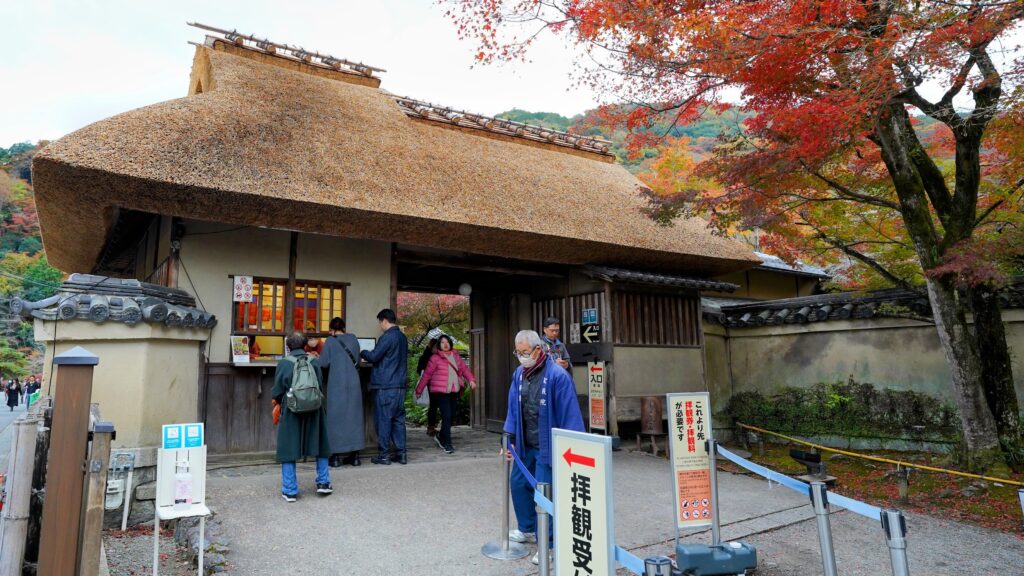
Hogo-in, a sub-temple of the Rinzai Tenryu-ji school, has a history spanning over 500 years. Originally founded in 1461 in Kyoto’s Kamigyo Ward with the support of the Hosokawa clan, it was destroyed by fire during the Onin War only six years later. However, the temple was destroyed by fire only six years later during the Onin War.
Around a century later, during the Azuchi-Momoyama period (1573–1591), the temple was rebuilt with the help of Toyotomi Hideyoshi. It continued to develop under the patronage of the Tokugawa shogunate during the Edo period.
After enduring hardships during the Meiji era, the temple was relocated to its current location in 2002, the former site of the Myochi-in Temple. Hogo-in inherited the renowned “Shishiku-no-niwa” (Lion’s Roar Garden). Although the original design of the garden is attributed to Zen monk Sakugen Shuryo during the Muromachi period, it was redesigned during the Meiji era. Today’s garden beautifully blends these historical layers and offers visitors a glimpse into its rich and resilient past.
Shishiku-no-niwa Garden
History of the Garden
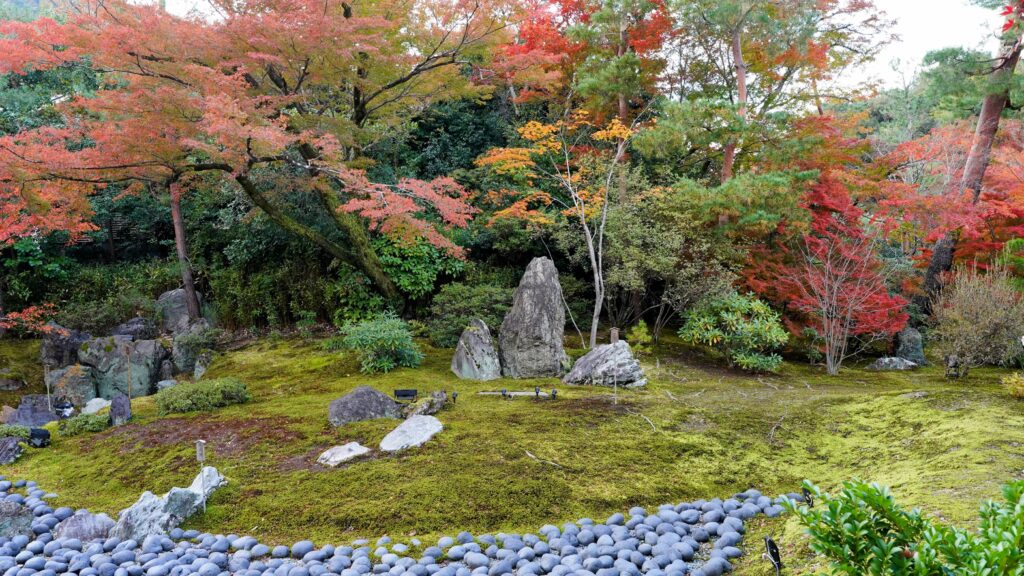
The garden at Hogo-in is called the “Shishiku-no-niwa,” meaning “Lion’s Roar Garden.” “Shishiku” is a Buddhist term that refers to the Buddha’s sermons. The garden is designed so that visitors can experience a sense of peace and understand the truths of life by listening to the sounds of nature—the birds, the wind, and the water.
The garden has a multi-layered history. Although the original design is attributed to Zen monk Sakugen Shuryo from the Muromachi period, it was intended for the Myochi-in temple, which previously occupied the site. The Yamamura family of landscape artists redesigned the garden in the Donketsu-ryu style in 1911 after a merchant named Uhei Tomura purchased the land. Thus, the current garden is a beautiful fusion built upon a Muromachi-period foundation and revived through Meiji-era modifications.
Features of the garden
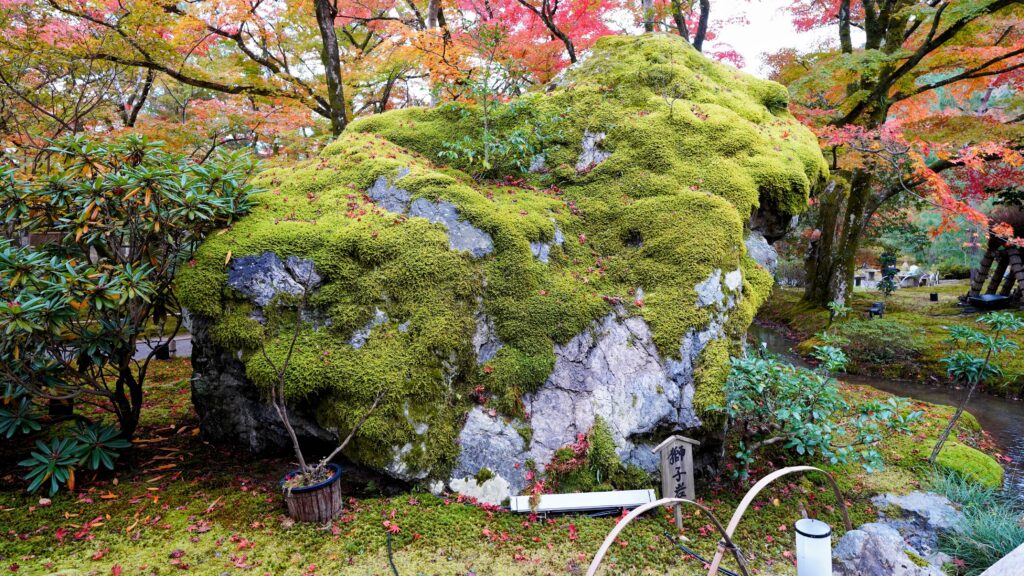
The “Lion’s Roar Garden” is a large stroll garden spanning approximately three acres (12,000 square meters) that uses the “shakkei” technique to incorporate the surrounding Arashiyama landscape into its views. Its key features include:
- Symbolic Rocks: The garden is rich with Buddhist symbolism, expressed through stone arrangements. One example is the “Shishi-iwa” (Lion Rock), which resembles a roaring lion from a certain angle.
- Buddhist Concepts in Stone: Other formations represent the Buddhist worldview.
- Kukai (Sea of Suffering): A path of round, black stones symbolizing life’s hardships.
- Sanzon-seki (Three Buddha Stone): A stone representing the historical Buddha.
- Funa-ishi (boat stone): A stone for those who cannot cross the Sea of Suffering.
- Zen Ideals: Similar to the garden at Tenryu-ji, this arrangement features a “Ryūmon-baku” (Dragon Gate Falls) and a “Rigyo-seki” (Carp Stone). This arrangement depicts a carp striving to climb a waterfall, symbolizing the Zen ideal of attaining enlightenment through diligent practice.
Building
Main Hall (Hondo):
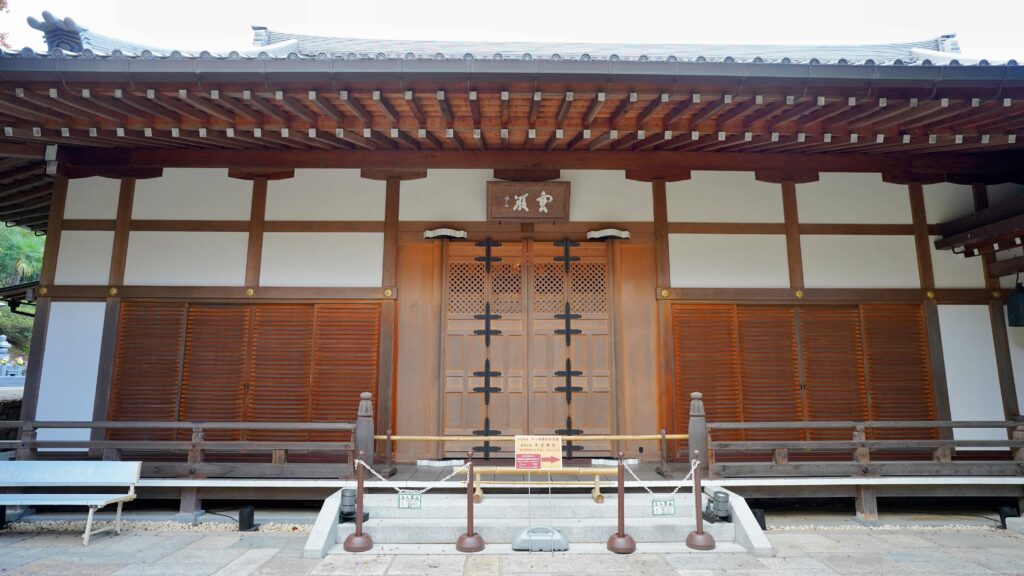
This Hojo-style hall was completed in 2008. It is famous for its 58 fusuma (sliding doors) painted by the artist Noriko Tamura and titled Fuga Sansan Sansan Jizai. The panels are known for their striking red-orange base color and depict various incarnations of the Kannon Bodhisattva.
Shoin (Study Hall):
Built in 1919, this structure served as the temporary main hall until the current one was completed. It has been preserved as an early example of modern Sukiya-style architecture. The front garden features a pond and a traditional shishi-odoshi (deer-frightening) water fountain.
Mugeko-do Hall (Perpetual Memorial Hall):
Located to the left of the main hall, this hall is used for perpetual memorial services. Constructed around the same time as the Main Hall, it is a relatively new building situated on an elevated spot surrounded by trees.
Seisho-ken Teahouse:
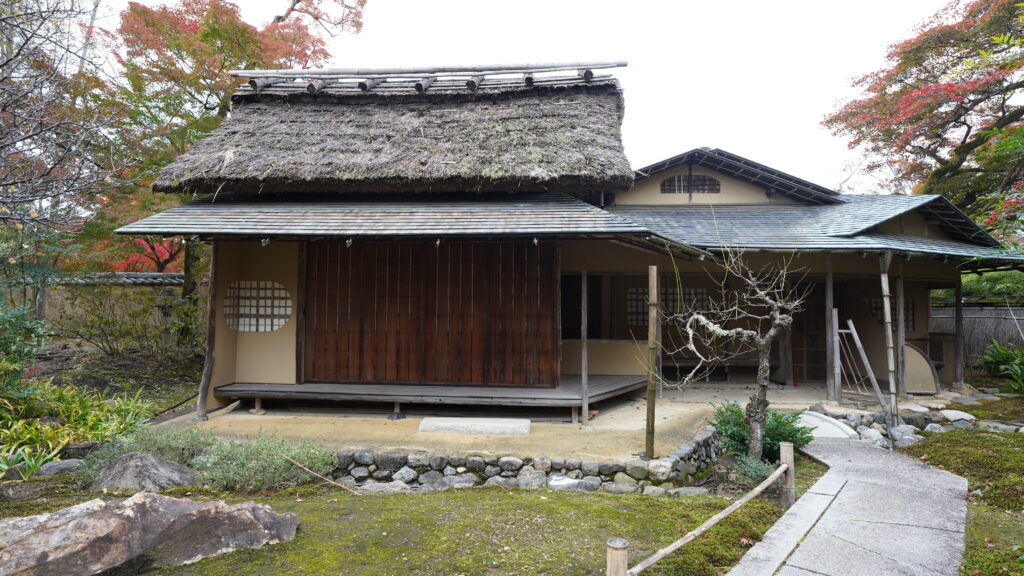
Tucked away to the right, just past the reception desk, this teahouse was originally part of a Taisho-era villa and has recently been restored. The name “Seisho-ken” means “a high, steep, verdant peak covered in lush trees.”
Muian Teahouse:
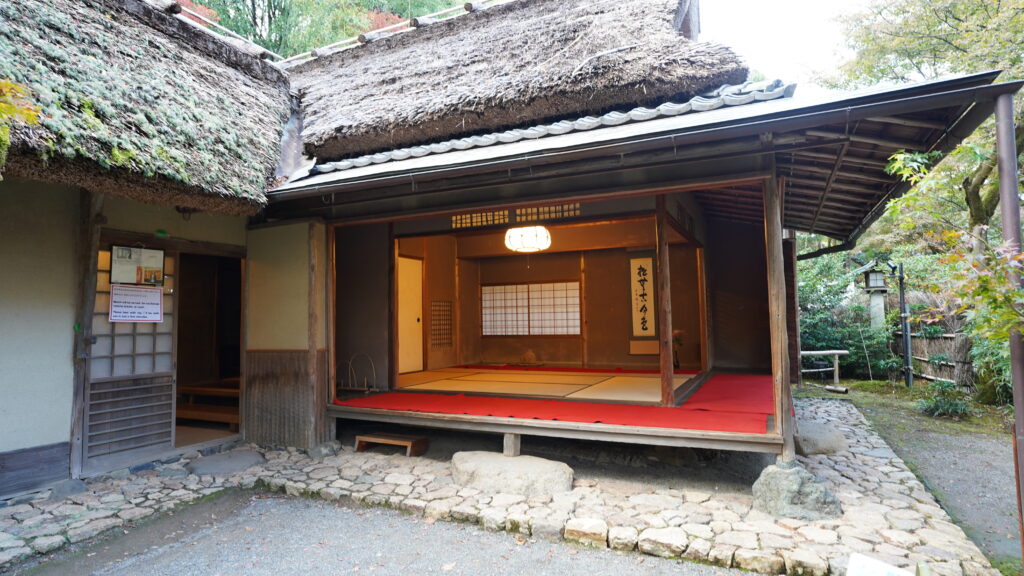
Situated south of Mugeko-do Hall, this teahouse offers a place to enjoy matcha tea while looking out at the garden. It has a distinctively shaped thatched roof and is believed to be from the Taisho era as well.
Infromation
Open Hours & Period :
- Regular Hours: 9:00 a.m. – 5:00 p.m. (Last entry at 4:45 p.m.)
- Autumn Evening Illumination: 5:30 p.m. – 8:30 p.m. (Last entry at 8:00 p.m.)
- Typically mid-March to late June (Spring) and early October to early December (Autumn).
- Note: Separate tickets are required for day and evening admission during this season.
Admission Fees :
| Ticket Type | Price (Adults) | Price (Children) | Notes |
| Garden Admission | JPY 700 | JPY 300 | |
| Main Hall Special Viewing | JPY 500 | JPY 300 | Additional fee |
| Autumn Evening Admission | JPY 1,000 | JPY 300 | |
| Joint Ticket | JPY 1,000 | With Kogen-ji Temple |
Location & Access :
Address: 36 Sagatenryuji Susukinobaba-cho, Ukyo-ku, Kyoto
By Train:
3-5 min walk from Randen (Keifuku) Arashiyama Station.
10 min walk from Hankyu Arashiyama Station.
10-15 min walk from JR Saga-Arashiyama Station.
By Bus:
5 min walk from “Arashiyama Tenryuji-mae” or “Keifuku Arashiyama-ekimae” bus stops.
Parking:
No dedicated parking is available. The nearby Tenryu-ji Temple parking lot can be used for a fee (JPY 1,000/day).
Link & Resorces
Official Website
Hogo-in Temple(En text)
